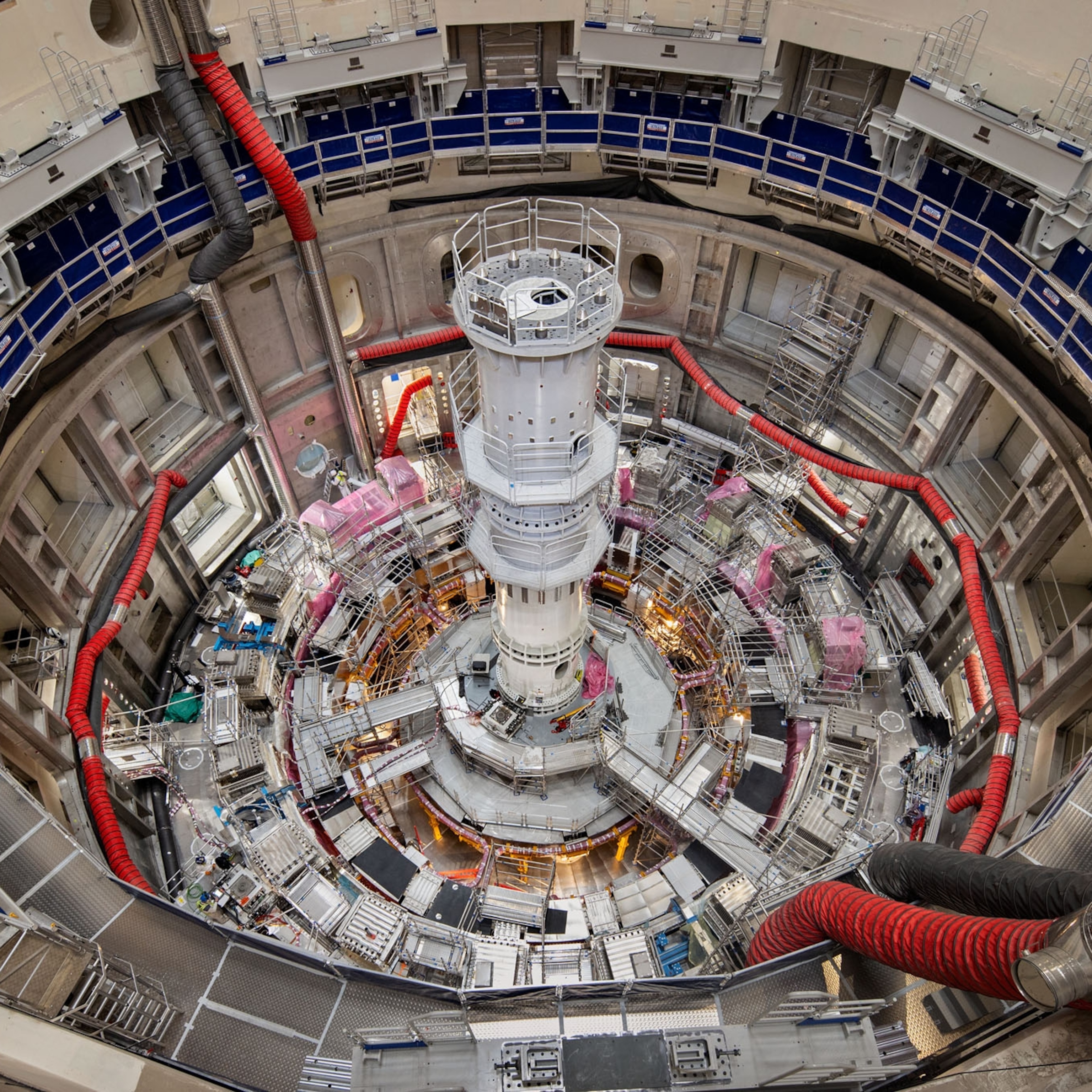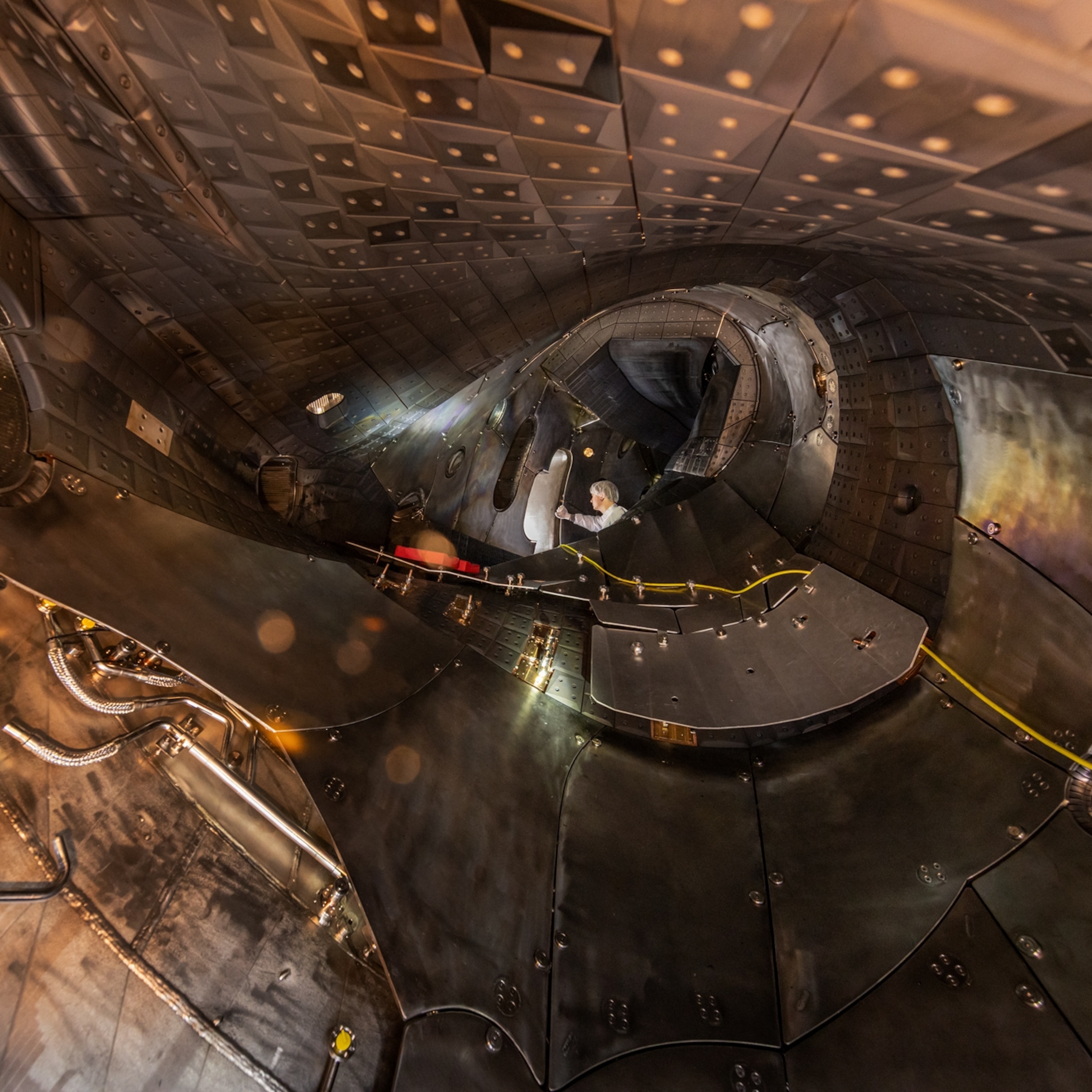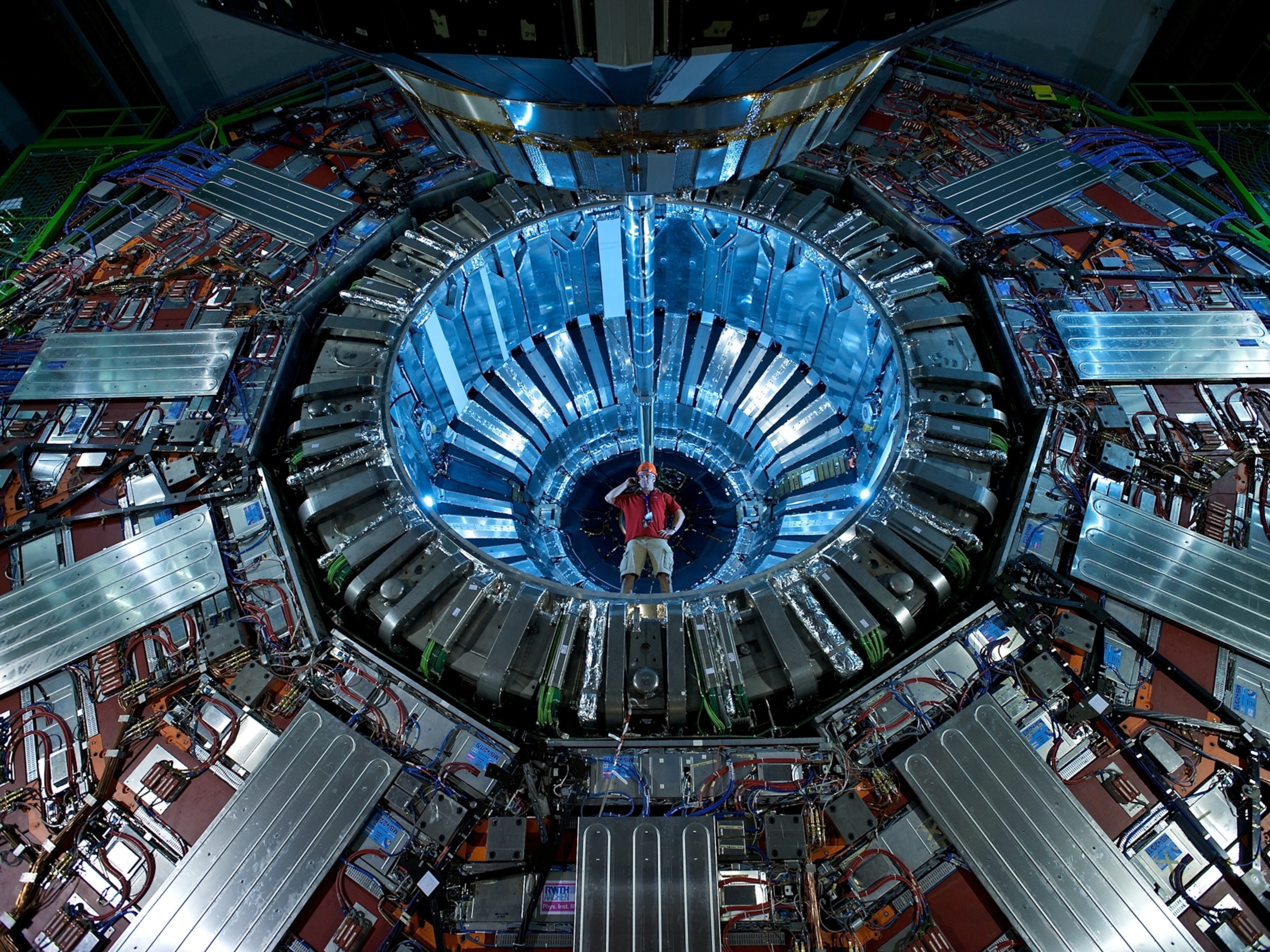
Scientists achieve a breakthrough in nuclear fusion. Here’s what it means.
A U.S. lab has successfully sparked a fusion reaction that released more energy than went into it. But there’s still a long way to go toward fusion as a clean energy source.
For more than 60 years, scientists have pursued one of the toughest physics challenges ever conceived: harnessing nuclear fusion, the power source of the stars, to generate abundant clean energy here on Earth. Today, researchers announced a milestone in this effort. For the first time, a fusion reactor has produced more energy than was used to trigger the reaction.
On December 5, an array of lasers at the National Ignition Facility (NIF), part of the Lawrence Livermore National Laboratory in California, fired 2.05 megajoules of energy at a tiny cylinder holding a pellet of frozen deuterium and tritium, heavier forms of hydrogen. The pellet compressed and generated temperatures and pressures intense enough to cause the hydrogen inside it to fuse. In a tiny blaze lasting less than a billionth of a second, the fusing atomic nuclei released 3.15 megajoules of energy—about 50 percent more than had been used to heat the pellet.
Though the conflagration ended in an instant, its significance will endure. Fusion researchers have long sought to achieve net energy gain, which is called scientific breakeven. “Simply put, this is one of the most impressive scientific feats of the 21st century,” U.S. Energy Secretary Jennifer Granholm said at a Washington, D.C. media briefing.
In reaching scientific breakeven, NIF has shown that it can achieve “ignition”: a state of matter that can readily sustain a fusion reaction. Being able to study the conditions of ignition in detail will be “a game-changer for the entire field of thermonuclear fusion,” says Johan Frenje, an MIT plasma physicist whose laboratory contributed to NIF’s record-breaking run.

The achievement does not mean that fusion is now a viable power source. While NIF’s reaction produced more energy than the reactor used to heat up the atomic nuclei, it didn’t generate more than the reactor’s total energy use. According to Kim Budil, director of Lawrence Livermore National Laboratory, the lasers required 300 megajoules of energy to produce about 2 megajoules’ worth of beam energy. “I don’t want to give you the sense that we’re going to plug the NIF into the grid—that’s not how this works,” Budil added. “It’s a fundamental building block.”
Even so, after decades of trying, scientists have taken a major step toward fusion power. “It looks like science fiction, but they did it, and it’s fantastic what they’ve done,” says Ambrogio Fasoli, a fusion physicist at the Swiss Federal Institute of Technology in Lausanne.
Sparking fusion ignition
Though nuclear fusion and nuclear fission both draw energy from the atom, they operate differently. Today’s nuclear power plants rely on nuclear fission, which releases energy when large, heavy atoms such as uranium break apart due to radioactive decay. In fusion, however, small, light atoms such as hydrogen fuse into bigger ones. In the process, they release a small part of their combined mass as energy.
In laboratories, coaxing hydrogen nuclei to fuse into helium requires creating and confining a “plasma”—an electrically charged gas, where electrons are no longer bound to atomic nuclei—at temperatures several times hotter than inside the sun. Scientists learned decades ago how to unleash this process explosively inside hydrogen bombs, and today’s fusion reactors can make it happen in a controlled way for fleeting instants.
Since the late 1950s and early 1960s, fusion reactors have had the same basic goal: create as hot and dense a plasma as possible, and then confine that material for long enough that the nuclei within it reach ignition. The trouble is, plasma is unruly: It’s electrically charged, which means it both responds to magnetic fields and generates its own as it moves. To support fusion, it has to reach truly staggering temperatures. Yet it’s so diffuse, it easily cools off.
Physicist Riccardo Betti, an expert on laser-driven nuclear fusion at the University of Rochester, likens the challenge of fusion ignition to burning gasoline in an engine. A small amount of gasoline mixes with air and then ignites from a spark. The spark isn’t massive, but it doesn’t have to be: All it has to do is ignite a small fraction of the gasoline-air mixture. If that tiny fraction ignites, the energy it releases is enough to ignite the rest of the fuel.
In terms of energy released, nuclear reactions pack roughly a million times more punch than chemical reactions do—and are vastly harder to get going. Past fusion experiments may have achieved the right temperatures or the right pressures or the right plasma confinement times to reach ignition, but not all those factors at once. “Basically, the spark was generated, but it wasn’t strong enough,” Betti says.
A pellet of fuel
NIF’s method of sparking the nuclear fuel starts with a peppercorn-size pellet that contains a frozen mix of deuterium and tritium, two heavier isotopes of hydrogen. This capsule is placed within a gold cylinder roughly the size of a pencil eraser that’s called a hohlraum, which is then mounted on an arm in the middle of a large, laser-studded chamber.
To trigger fusion, NIF fires 192 lasers all at once at the hohlraum, which angle into it through two holes. The beams then slam into the hohlraum’s inner surface, which causes it to spit out high-energy x-rays that rapidly heat up the outer layers of the capsule, making them burn off and fly outward. The inner part of this capsule rapidly compresses to nearly a hundred times denser than lead—which forces the deuterium and tritium inside to reach the temperatures and pressures needed for fusion.
In 1997, the National Academy of Sciences defined what “ignition” would mean for the facility, which broke ground that same year: when fusion energy released exceeds the energy of the lasers.The facility opened in 2009, and reaching this threshold ended up taking more than a decade. In August 2021, NIF reported its best-ever experimental run up to that point: 1.32 megajoules of released fusion energy for 1.92 megajoules of inputted laser energy.
The 2021 run signaled that ignition could be achieved within the NIF reactor. To finally cross the threshold, NIF researchers made a few minor tweaks, which included operating at slightly higher laser energies. “Any small changes, if you do them right, will have significant changes on the outcome,” Frenje says.
The dream of a fusion power plant
For all of NIF’s success, commercializing this style of fusion reactor wouldn’t be easy. Betti, the University of Rochester physicist, says that such a reactor would need to generate 50 to 100 times more energy than its lasers emit to cover its own energy use and put power into the grid. It’d also have to vaporize 10 capsules a second, every second, for long periods of time. Right now, fuel capsules are extremely expensive to make, and they rely on tritium, a short-lived radioactive isotope of hydrogen that future reactors would have to make on-site.
But most of these challenges aren’t unique to NIF, and the world’s many fusion labs and companies are chipping away at them. Last year the Joint European Torus (JET), an experimental reactor in Culham, England, set a record for the most fusion energy ever released during a single experimental run. Construction on JET’s successor—a huge international experiment known as ITER—is underway in France. And private companies in the United States and United Kingdom have built next-generation superconducting magnets, which could help create smaller, more powerful kinds of reactors.
It’s hard to say when, or even if, this work will yield a new energy future. But fusion researchers see the technology as an incredible tool for humankind whenever it’s ready—whether that’s 20, 50, or 100 years from now.
“When people say fusion is very complex, it’s true, but when people say that fusion is too complex, it’s not,” Fasoli says. “We know how to do complex things … Going to the moon is not simple. Achieving this result in fusion, it’s not simple. And we’ve demonstrated we can do it.”








